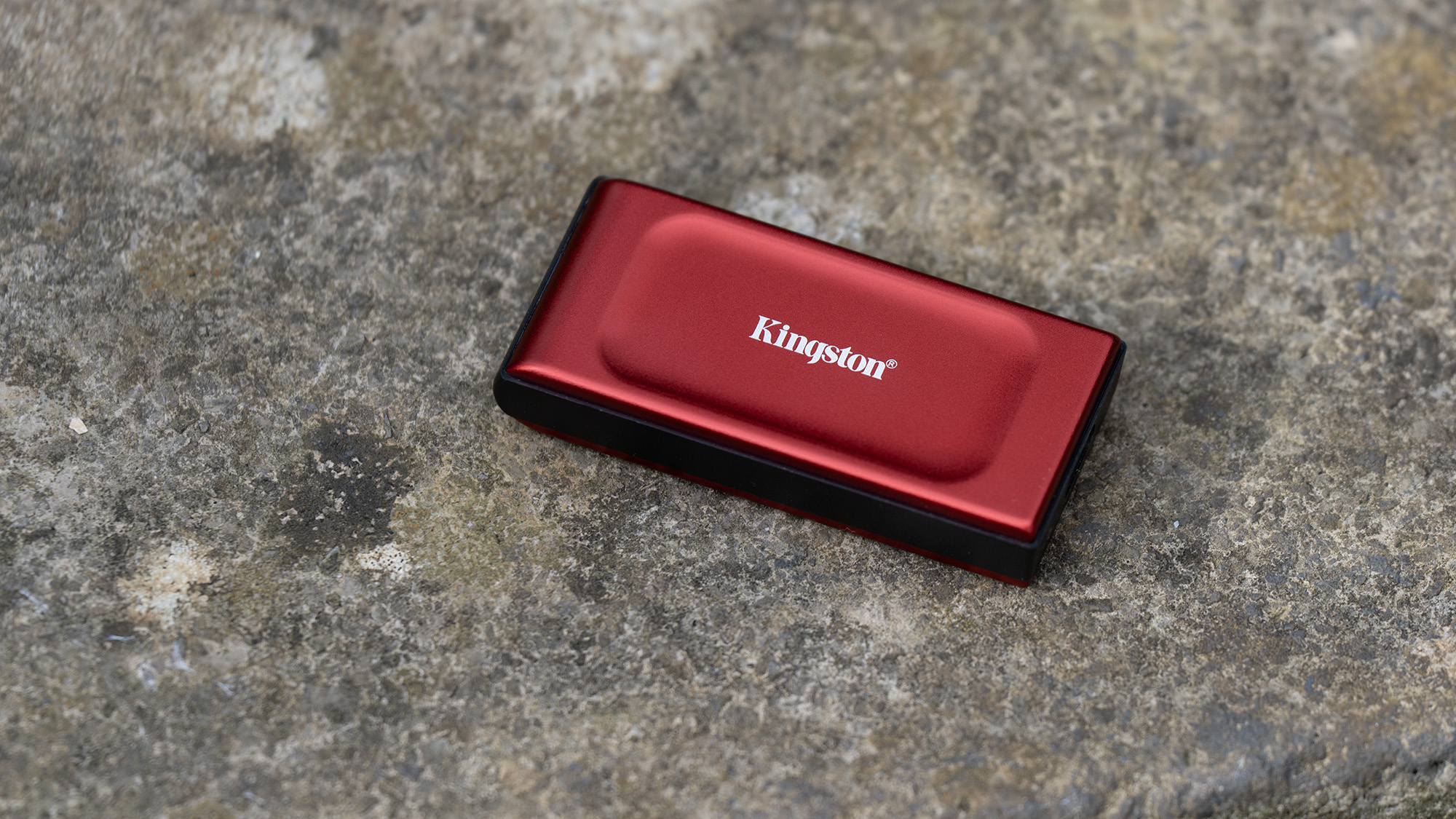
The ‘R’ stands for red. Not resolution, or racing, or rambunctiousness. This means, if you’ve been wondering, that there's no difference between the R and non-R versions of the XS1000 SSD, other than the fact the red one is clearly superior due to the colour of its casing.
‘Red ones go faster’ is a common maxim, especially among the Orks of the Warhammer 40K universe, so it seems appropriate to review that model here. There's nothing a creative studio with large amounts of data to move about likes better than a fast external drive, after all.
Design and build
Capacity: up to 2TB
Interface: USB 3.2 Gen 2
Dimensions: 69.5 x 32.6 x 13.5mm
Weight: 28.7g
Not too long ago, we’d have expected something the size of the Kingston XS1000 to extrude a USB-A plug and be a thumb drive. That’s a testament to how small it is, though the USB-C socket built into it and the need to carry a cable perhaps limits its portability. That’s why it’s an external drive rather than a portable one, though it’s not like our lives haven’t been taken over by a wriggling spaghetti of USB Type-C cables ever since the switchover began.
And while there may be no difference between the red and black models internally, a red drive is just a nice thing to have. It gives it distinctiveness and makes it more likely to be found among the mostly black USB hubs and HDMI stitches that lurk around the back of our computers. Not everybody keeps a desk as tidy as those you regularly see in the photos on this site, which are often specially prepared stunt desks only used for making tech look good [editor's note: he's right, but he shouldn't say it].
The case is made from metal and plastic, and while it lacks the rubber armour that clothes the more rugged external drives, it also doesn’t feel like you’re going to crush it with a hug. All that you’ll find on its surface are the USB-C port and a blue light that shows its working, which is all you need.
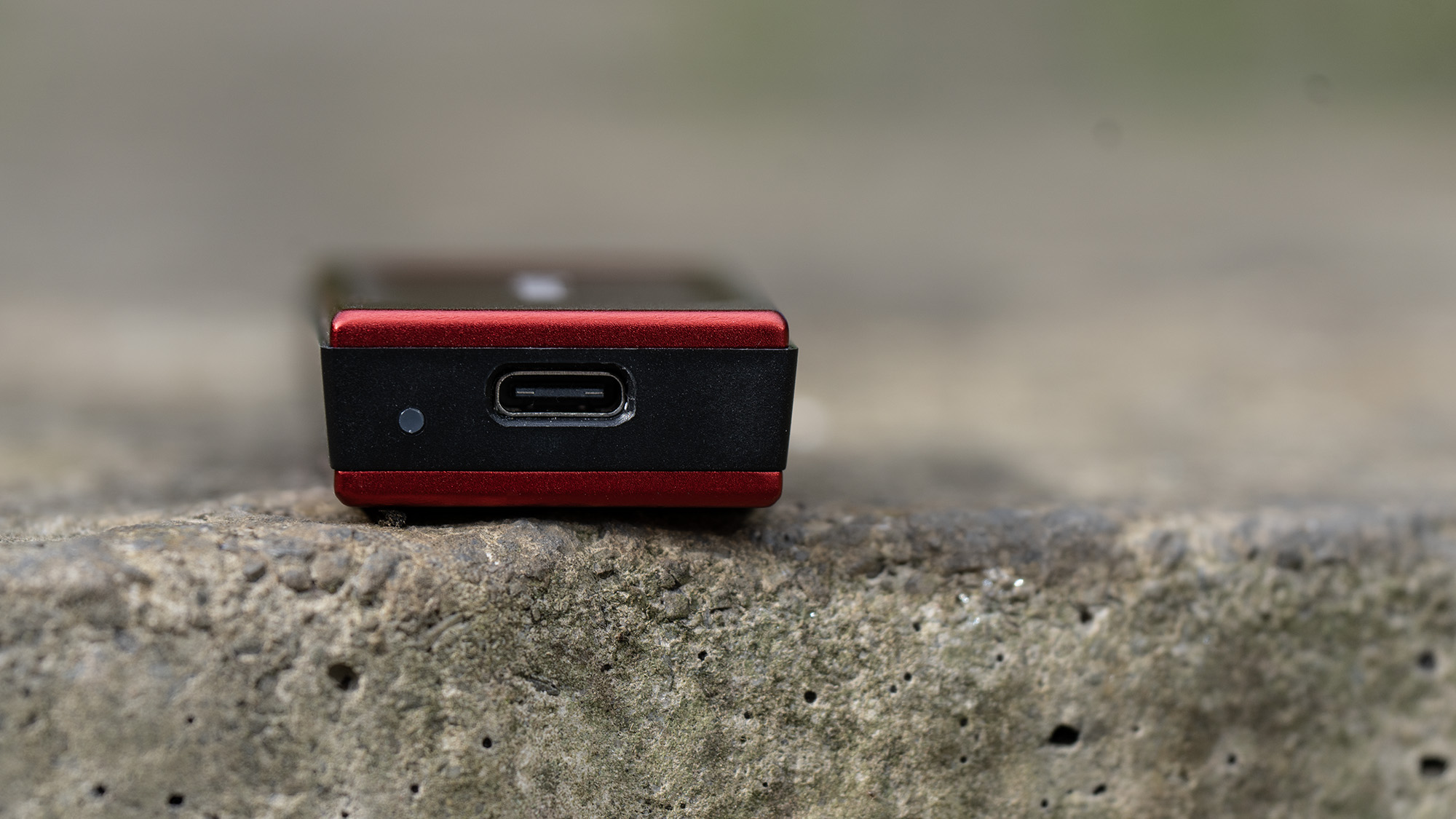
Features
The drive comes in a choice of 1TB or 2TB internals - we’ve got the 2TB version here - and the yawning chasm of its abyssal depths, aching to be filled, is all you get. Unlike drives from the likes of Crucial, there are no links to backup software or anything else you’ll probably disregard. It’s a streamlined offering that doesn’t need anything to be deleted off it before you start using it.
The USB-C connector is a USB 3.2 Gen 2 one (that’s the 10Gbps flavour of USB 3 for anyone who’s been left behind by all the identical ports and confusing names). It comes with a short, black USB-A cable and a Type-C adapter, but we found that the best speeds were achieved by discarding this, and connecting it directly to a faster port with a dedicated Type-C cable.
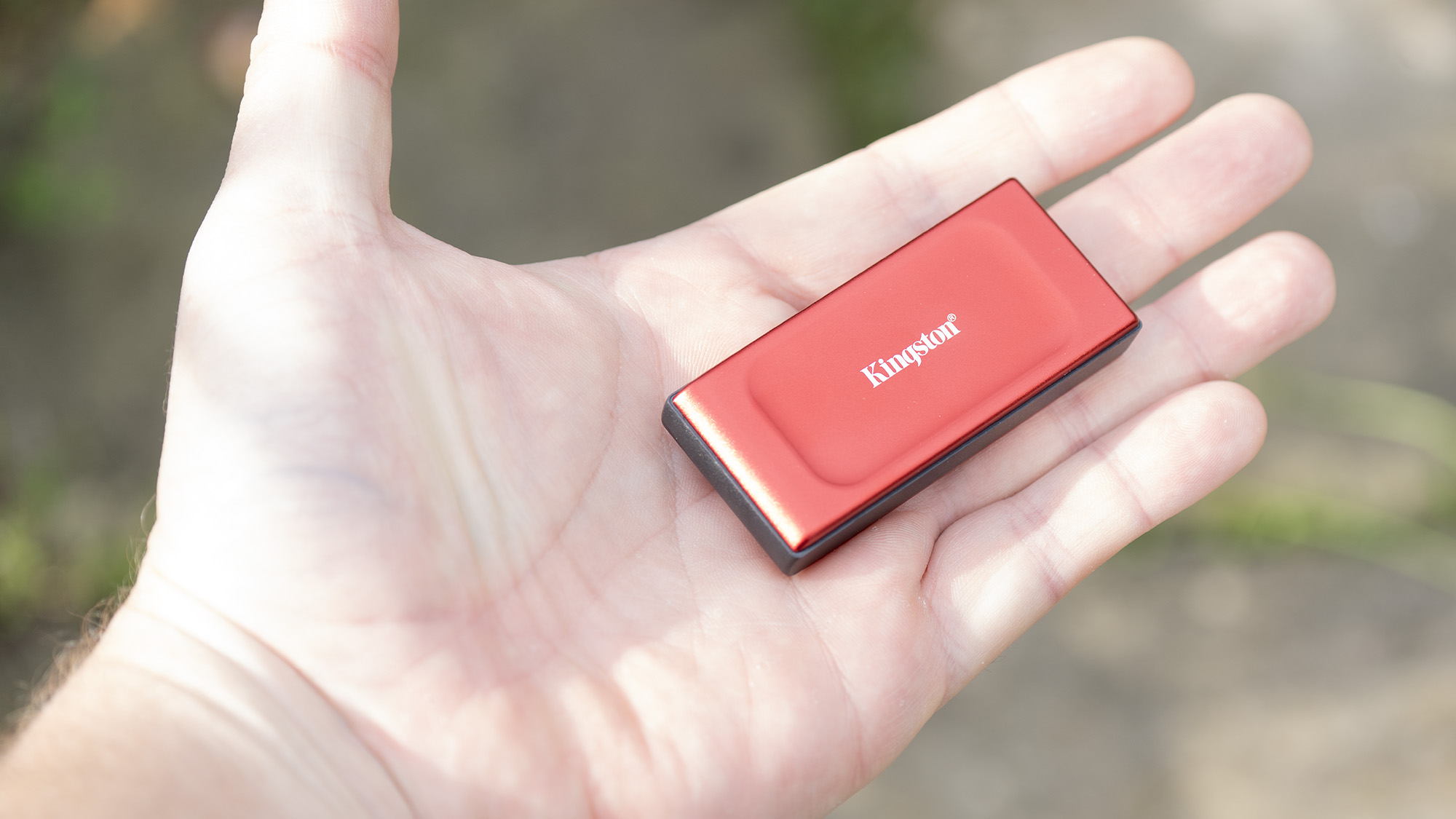
Performance
Kingston claims a maximum read/write speed of 1,050MB/s for the drive, but in our testing, it performed slightly more slowly. Using the bundled cable connected to a USB 3 port provided the slowest speeds - you’ll need to make sure the port you’re using is a Gen 2 one to get the best out of it, as Gen 1 ports, which operate at half the transfer speed, are very common and there's often no way to tell the difference.
Connecting the drive to a USB 4 port with a Type-C cable provided the best speeds, doubling the throughput of the drive. The problem then became the cable itself - we tried it with three different cables, a long one meant mainly for charging (the worst), the one that came with an iPad Pro (better) and a particularly thick one the provenance of which is lost to time and that we found in our spare cable box. This one came closest to the 1,050MB/s mark for drive reads, though writes were still slower. Perhaps using another cable would have improved things further.
This kind of transfer speed isn’t going to trouble the likes of the Sandisk Professional PRO-G40, but then the Kingston drive is about a third of the price.
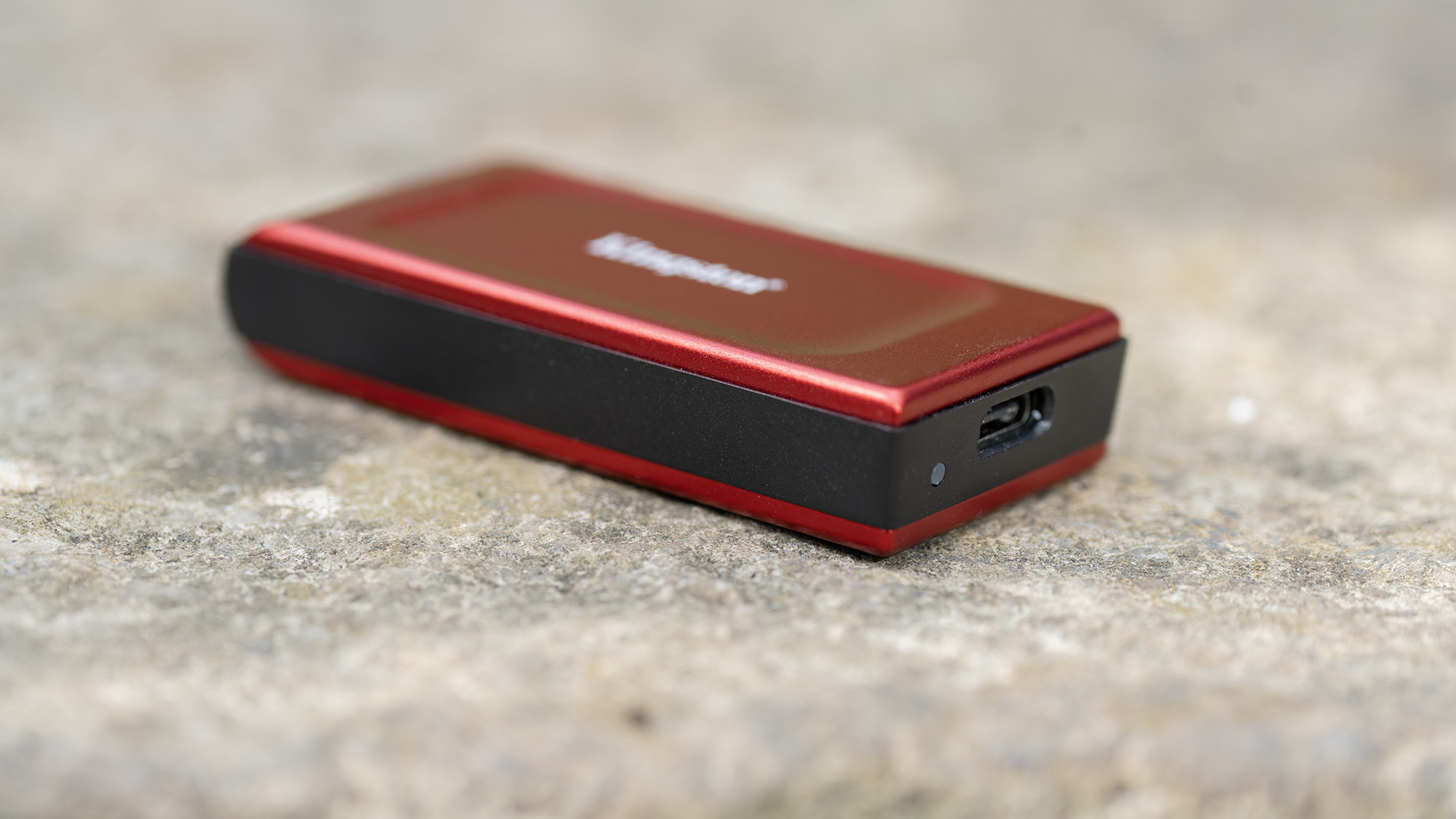
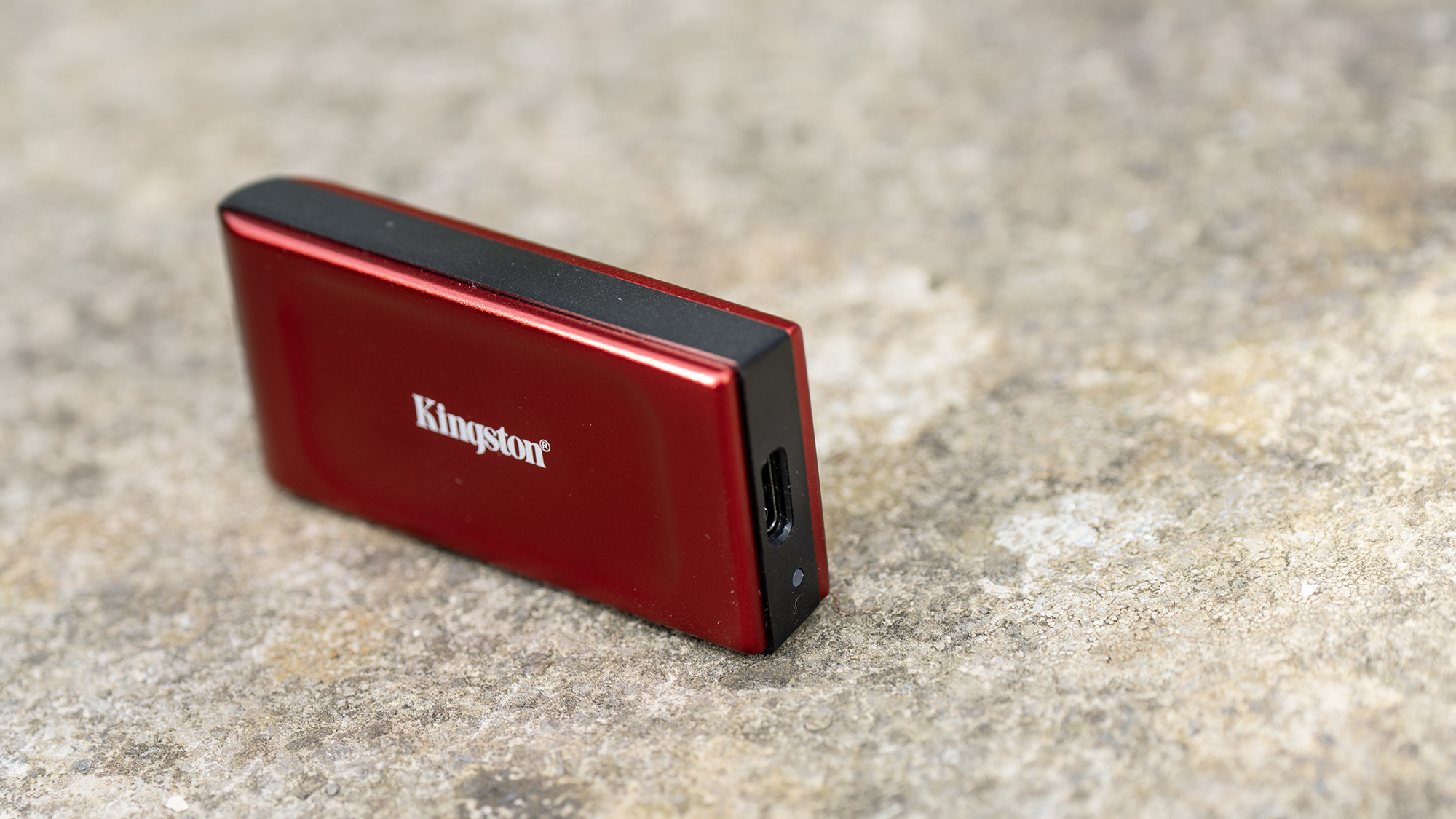
Price
It is entirely possible to pay an awful lot of money for an external SSD, and if you do that you’re going to get something that will suck the data off your PC or Mac faster than an anteater that hasn’t feasted for a week. This is not one of those drives, which comes in at £128 on Kingston's site. it can’t keep up with multi-gig Thunderbolt transfers, but it is small, capacitous and effective. And most importantly it’s much more reasonably priced than the monsters from SanDisk and even Samsung, whose T7 portable drive costs more for the same amount of storage.
Who’s it for?
Anyone. This is a reasonably priced portable drive that will be at home anywhere. At 2TB capacity, it’s going to add a useful amount of storage to just about any PC or Mac, and its nippy transfer rate means it’ll be handy for video files or even holding your Steam library.
Buy it if
- You need extra storage
- You love red things
- Your budget doesn’t stretch to the bank-breaking options
Don't buy it if
- You want bundled backup software
- The transfer speed isn’t high enough
- You prefer your electronics to be all black







